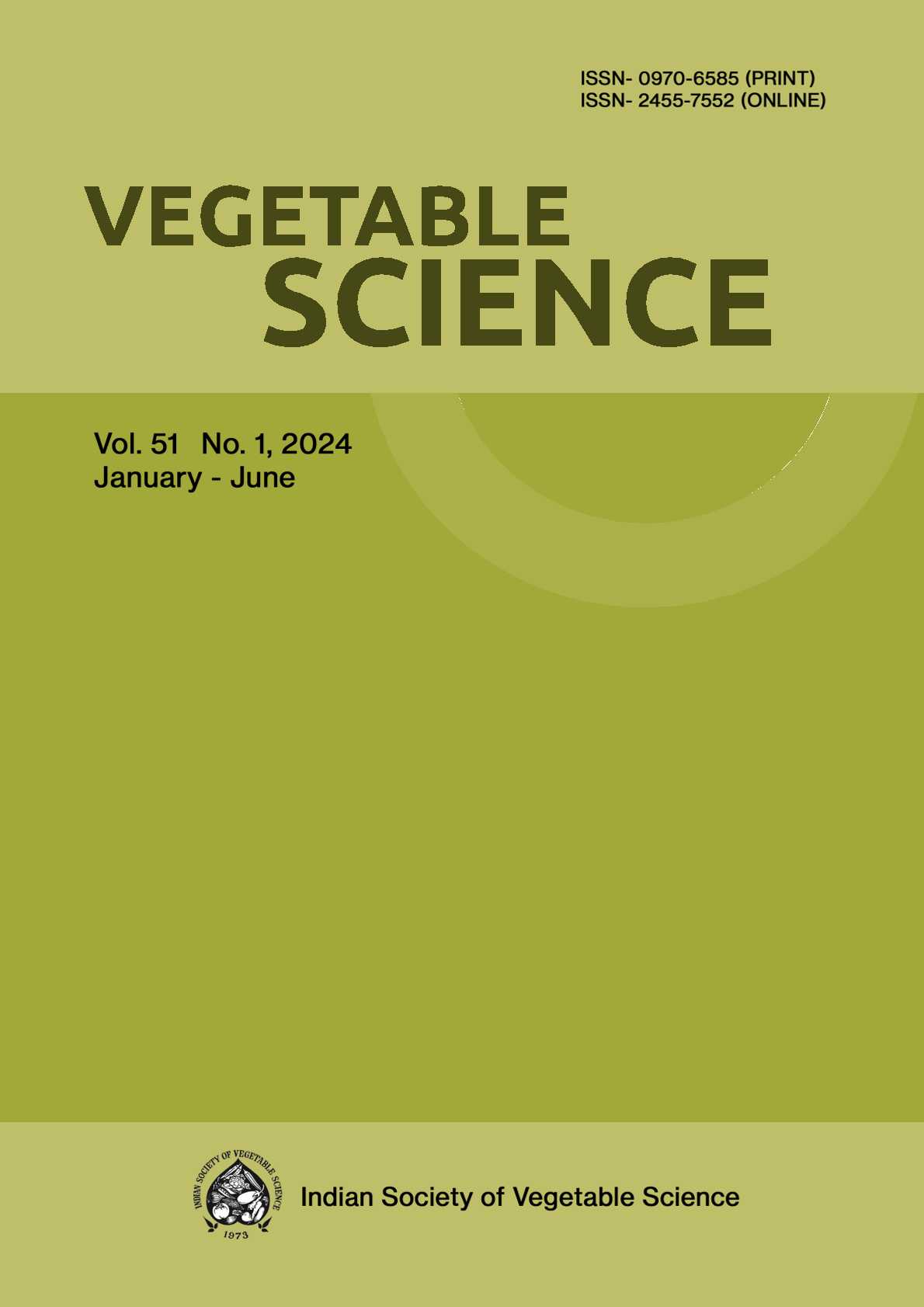Genetics and heterosis for short stature, earliness and high productivity in pumpkin for intensive cultivation
DOI:
https://doi.org/10.61180/Keywords:
Pumpkin, combing ability, heterosis, earliness, yield, intensive cultivationAbstract
The intensive cultivation of pumpkin demands genetic
studies of bush growth, earliness and high yield that was
carried out in half diallel including bush and butternut
parents. In this study, P-1343 was the best general combiner
for short vine, earliness and lower fruit weight; P-41212 was
best general combiner for days to 50% male flowering (-
1.72) and number of fruits per plant (0.23) and P-10224, was
the best general combiner for fruit yield per plant (0.89).
Among 36 crosses, high specific combining ability (SCA) in
P-41212 × P-6242, PS × P-364, PS× P-1343, P-10224× P-6242,
P-41212 × P-2211, P-41212 × P-10224, P-3621 × P-2211 and PS
× P-6242 for short vine growth and earliness and in P-6711 ×
P-10224, PS × P-2211, P-41212 × P-3621, P-41212 × P-1343, P-
364 × P-10224 for yield per vine represented the occurrence
of both additive and non-additive gene effects with the
predominance of non-additive effects (ó2SCA/ ó2GCA >1)
for the inheritance of most of these traits in pumpkin and
suggested further improvement through heterosis breeding
and recurrent selection for high SCA. Among hybrids, PS ×
P-364 (27.96%), being bush type and early, represented
significant and desirable economic heterosis for yield per
hectare over PPH-2 and was at par with PPH-1. It could be fit
into intensive cultivation after testing in multi-environments
Downloads
Published
Issue
Section
License

This work is licensed under a Creative Commons Attribution-NonCommercial-NoDerivatives 4.0 International License.






